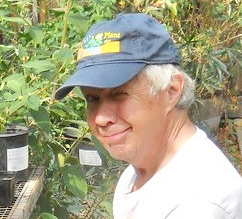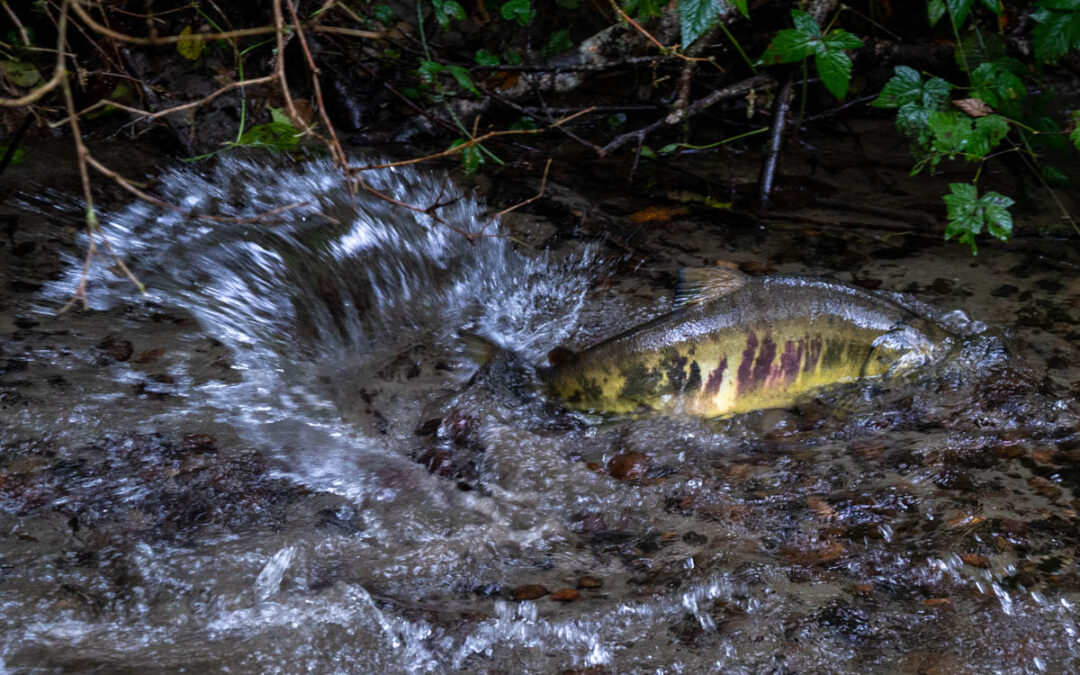
This is a guest blog article written by Michael Laurie. Michael has decades of experience on buildings and landscapes of all sizes on Vashon and in the Seattle area, helping them manage their stormwater, consulting on water efficiency, and also carrying out residential energy audits. Through a Vashon Nature Center sponsored King County Waterworks Grant, Michael can make free stormwater assessment visits to any home or business located in the Vashon Sewer District to help give advice on stormwater control challenges. He can be reached at: mlaurie@mindspring.com
Last year I submitted an article on stormwater and how I can help you if you have stormwater problems on your property. This is an update on how I can help for free if you are connected to the Vashon sewer or if you are in the Shinglemill or Judd creek drainages.
There are two main reasons that you might want help with stormwater on your property:
- Uncontrolled stormwater can damage your buildings and landscape with sometimes a high-cost impact.
- Stormwater is a major source of harmful pollution to Puget Sound which is harming salmon, orcas, and sometimes us.
Some of the problems I can help with include:
- Downspouts that pour their water on the ground next to the foundation of your home or business.
- Drainage systems with leaks.
- Large flows of stormwater creating erosion.
- Excess stormwater flowing onto steep slopes to contribute to landslides.
- Stormwater flowing off pavement into a stream.
The 2022 Salish Sea Toxics Monitoring Synthesis is a summary of several scientific studies on pollutants in the Salish Sea (which includes Puget Sound) and pollutants in the sediment, fish, mammals, and more.
https://www.eopugetsound.org/sites/default/files/features/resources/PSEMP_2022ToxicsMonitoringSynthesis_FINAL1.1.pdf The pollutants showing up a lot included pharmaceuticals, personal care products, 6-PPD-q products from tires, heavy metals, PFAS (forever chemicals used in some fire-fighting foams and to create waterproof barriers in rain gear), and polycyclic aromatic hydrocarbons – which can come from many sources including burning fossil fuels.
Many of these pollutants were found at harmful levels, especially harmful to salmon and orcas.
In the over 30 ongoing studies in this report, they found that pollution is widespread and growing in many areas. And one of the key sources of pollution is stormwater and the outfall from wastewater treatment plants. The good news is that rain gardens and some other stormwater control and treatment measures have been found to control some of these pollutants. And I was recently interviewed by a researcher working on an assessment of a new product being developed to filter out PFAS and 6-PPD-q chemicals.
Of course, the downside of running the contaminated water through one of these filtering systems is that now that soil should not be used for growing food. And the filtering system might need periodic maintenance to keep the pollutants out of groundwater. The best long-term solution is to learn which products have harmful ingredients and look for alternative products that do not contain them.
One of the studies looked at pesticides and found pesticide ingredients that some people use in their gardens including malathion, permethrin, chlorpyrifos, glyphosate, and more. The best solution for reducing these pesticides is to choose safer garden product alternatives. You can find safe products by looking for the green stickers at Ace or Island Lumber or by going to the web site Grow Smart Grow Safe. https://www.growsmartgrowsafe.org/
Another good guide to safer alternatives is the EPA’s Safer Choice web site. It is focused on letting you know which cleaning products contain safe ingredients which will not contribute to pollution problems in Puget Sound. https://www.epa.gov/saferchoice
One option for controlling downspouts pouring stormwater on the ground next to your building is to install properly sized rainwater cisterns at downspouts. Those cisterns can store and slowly release the downspout water and avoid the initial muddy mess sometimes made by downspouts pouring water on the ground. They can protect the foundation of your building from water damage.
Another option for controlling and using downspout water or other flows causing problems is to direct it into a professionally designed rain garden. A rain garden is a lower section in your garden that includes plants well adapted to the varying flows provided by stormwater.
Even if your property does not have good enough drainage for a rain garden to work well, there are other solutions to slow down, control, and filter the stormwater.
The following web site of Washington State University has some good ideas on addressing stormwater also. https://ruralstormwater.wsu.edu/
King County has a Green Stormwater Infrastructure Mini Grants Program that might be able to provide funding for part of the cost of installing some of these measures. Please check out their web site to learn if your project might qualify.
If you would like me to make a free visit to your property, please contact me at mlaurie@mindspring.com
Featured photo: A chum salmon navigates up an island creek. photo credit: Brendan McGarry

